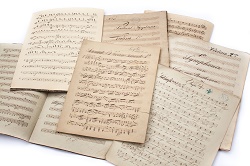 There’s a famous essay by Edgar Allan Poe titled “The Philosophy of Composition,” in which the poet and storyteller outlines what he says to be the method used in writing his famous poem, “The Raven.” I rather blush to say that I have taught about this piece in a high-school English class (hey, it was in the anthology) and taken it seriously, as indeed a quick Google search will show that most reviewers do.
There’s a famous essay by Edgar Allan Poe titled “The Philosophy of Composition,” in which the poet and storyteller outlines what he says to be the method used in writing his famous poem, “The Raven.” I rather blush to say that I have taught about this piece in a high-school English class (hey, it was in the anthology) and taken it seriously, as indeed a quick Google search will show that most reviewers do.However, since no one has ever written anything creative following the rigidly logical process that Poe outlines, there is a well-founded theory that the whole thing was a satire or a hoax. T. S. Eliot said that if Poe really followed his own advice in writing the poem it should have been a little better: “The result hardly does credit to the method.” So there’s this guy, you see, whose beloved has died, and this bird, a raven, raps on his window. (Surely one of the worst rhymes in a supposedly serious poem: “that is” and “lattice.”) The guy lets the bird in and discovers that it can speak, but apparently knows only one word, “Nevermore.” So he torments himself by asking the bird questions: Have you been sent to help me forget my sorrow? Is there any help for me? Will I see my lost love in the afterlife? And the poem ends with the poet on the floor, knowing that he will never ever escape from the “mournful and never-ending remembrance” symbolized by the bird. Kind of lame, wouldn’t you say? (At least he didn’t have the bird be a parrot.)
So what, you may ask, does this have to do with Mozart and the Requiem? Just this: true genius cannot be reduced to a formula. If it could be, there’d be geniuses, and masterpieces, all over the place. We don’t have any records of how Mozart worked. There was no webcam recording him sitting at his desk scratching away. (We do know it is a myth that he wrote with no revisions or corrections, as if he were just taking dictation from the music in his head. There is abundant evidence that he reworked his compositions substantially.) Here’s what we do know about his composition of this specific work:
1. He did it for money. As I explained in my previous post, he was hired to write the work for an anonymous nobleman and paid extravagantly, or at least given a down payment. (I wonder if there are any records of what happened to that 30 ducats paid by Count Walsegg. He certainly never got his manuscript.)
2. He did it under pressure. He had people clamoring for finished works, especially for The Magic Flute. And now, on top of everything else, he had agreed to this additional project.
3. He was working within a constrained form. There is a theory of artistic accomplishment which says that creativity is unleashed when the artist has limited options. So the greatest poetry in the world isn’t written in free verse but instead within certain rhyme and meter formats–the sonnet, for instance. (My son is very fond of the novels of Georges Perec, whose work A Void was written without using the letter “e.”) The words and structure of a requiem mass were already set for Mozart, so all of his originality could be expended on the music itself.
What exactly is a requiem mass, by the way? It is literally “a mass for the dead,” originally part of the liturgy in the Roman Catholic Church (which Mozart followed), offered for the repose of someone deceased, often but not always performed in the context of a funeral. I will be looking at the sections in further detail in the weeks to come. So much to say! For now, though, watch this scene from Amadeus (last reference to the movie, I promise) in which the dying Mozart dictates the Requiem to Salieri. As I said last time, this scene did not really happen. But it has been called, by whom I don’t remember, the finest depiction of the compositional process ever put on film, and I can’t disagree. Watch, watch, watch!

